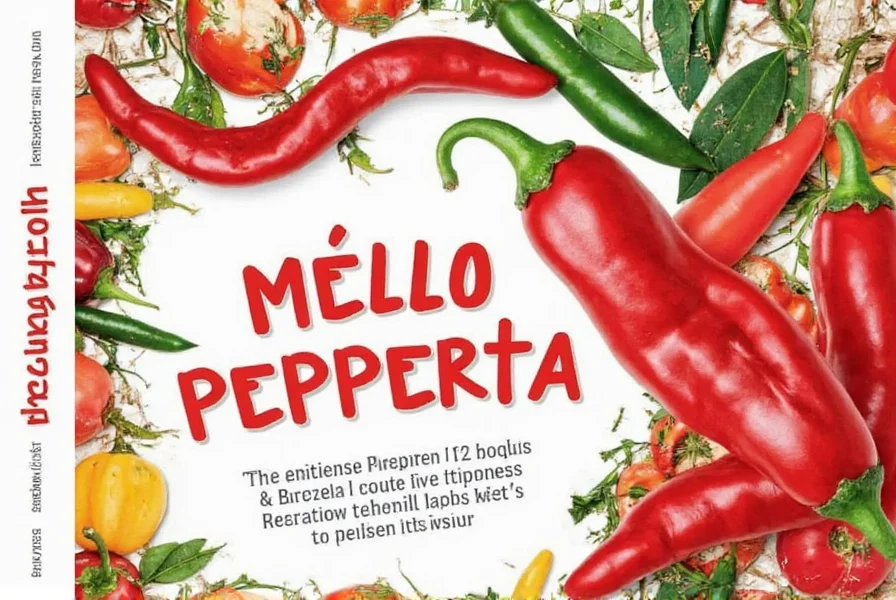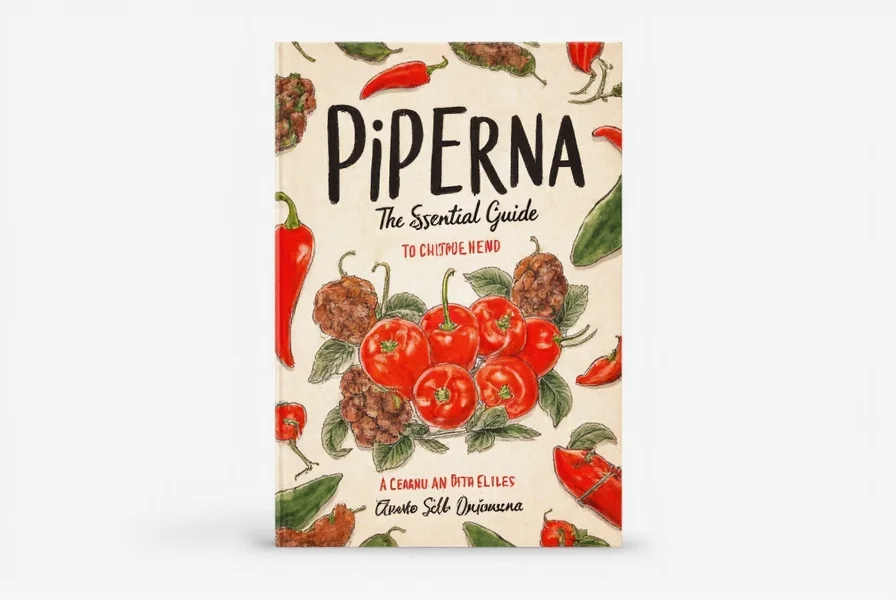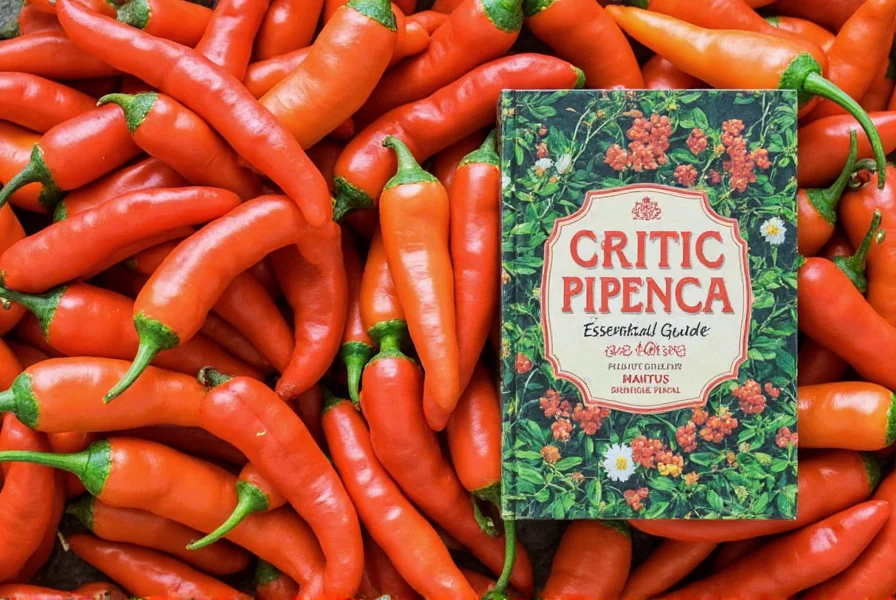Understanding Pimenta Varieties and Their Culinary Significance
When exploring what pimenta means in cooking contexts, it's crucial to recognize that this term encompasses several distinct pepper varieties, each with unique flavor profiles and heat levels. Unlike generic 'pepper' references in English that might indicate black pepper, pimenta in Portuguese-speaking regions almost exclusively refers to chili peppers.
Primary Pimenta Varieties You Should Know
Understanding the differences between pimenta de cheiro vs malagueta helps home cooks and professional chefs select the right variety for specific dishes. These peppers aren't interchangeable due to their distinct characteristics:
| Variety | Heat Level (Scoville) | Flavor Profile | Common Culinary Uses |
|---|---|---|---|
| Pimenta de cheiro | 5,000-15,000 | Fruity, aromatic, moderately spicy | Moquecas, vatapá, caldeiradas |
| Pimenta malagueta | 60,000-100,000 | Sharp, intense heat with citrus notes | Hot sauces, temperos, condiments |
| Pimenta dedo-de-moça | 30,000-50,000 | Bright, slightly sweet heat | Stews, rice dishes, marinades |
The Cultural Importance of Pimenta in Lusophone Cuisines
When researching how pimenta is used in Brazilian cooking, you'll discover it's not merely a spice but a foundational ingredient. In Bahian cuisine particularly, pimenta de cheiro forms the flavor base of iconic dishes like moqueca (seafood stew) and caruru (okra stew). The careful selection of pimenta variety directly impacts the authenticity of traditional recipes.
Unlike many Western culinary traditions where chili peppers serve as optional heat elements, pimenta in Portuguese recipes often provides essential aromatic complexity. Chefs in Portugal and Brazil typically use fresh pimenta rather than dried alternatives, preserving volatile compounds that contribute to distinctive flavor profiles.

Nutritional Benefits and Proper Handling Techniques
Understanding the health benefits of pimenta consumption reveals these peppers contain significant capsaicin, vitamin C, and antioxidants. Regular inclusion of pimenta in traditional diets correlates with various health advantages, though scientific research continues to explore these connections.
When working with fresh pimenta, proper handling techniques prevent skin irritation. Always wash hands thoroughly after handling, and consider using gloves when preparing extremely hot varieties like malagueta. For how to store pimenta properly, refrigeration in perforated plastic bags maintains freshness for 1-2 weeks, while freezing preserves flavor for several months.
Substituting Pimenta When Unavailable
For those wondering what to use instead of pimenta de cheiro, suitable substitutions depend on which characteristic matters most for your recipe. If aroma is crucial, a combination of serrano peppers with a touch of bell pepper works well. For pimenta malagueta's intense heat, Thai bird chilies or habaneros (used sparingly) provide comparable fire.
However, authentic Brazilian and Portuguese dishes rarely achieve their intended flavor profile with substitutions. When possible, seek specialty markets or online retailers that carry genuine pimenta varieties. Many Brazilian grocery websites ship frozen pimenta that maintains quality during transit.

Common Misconceptions About Pimenta
One widespread misunderstanding involves pimenta vs piri piri confusion. While both refer to chili peppers, piri piri specifically denotes African bird's eye chili (also called malagueta in some regions), creating overlap that confuses many home cooks. True piri piri sauce originates from Portuguese colonial influence in Africa, not Portugal itself.
Another misconception suggests all pimenta varieties are extremely hot. In reality, pimenta de cheiro offers moderate heat levels comparable to serrano peppers, making it accessible to those with medium spice tolerance. Understanding these distinctions helps cooks select appropriate varieties for their skill level and audience.
Integrating Pimenta Into Your Culinary Practice
For chefs exploring how to use pimenta in everyday cooking, start by incorporating small amounts into familiar dishes. Add finely chopped pimenta de cheiro to scrambled eggs, salad dressings, or tomato sauces to experience its aromatic qualities without overwhelming heat. As your palate adjusts, experiment with traditional recipes that showcase pimenta's unique contributions.
Remember that freshness significantly impacts flavor. When selecting pimenta, choose firm, brightly colored peppers without wrinkles or soft spots. The best specimens snap crisply when bent, indicating peak freshness and optimal flavor potential for your culinary creations.
Final Considerations for Pimenta Enthusiasts
Mastering pimenta usage in traditional recipes requires understanding that these peppers function as integral flavor components rather than simple heat sources. The subtle differences between varieties significantly impact dish authenticity. As you explore Brazilian and Portuguese cuisines, treat pimenta with the same consideration given to wine or olive oil in Mediterranean cooking—recognizing its role as a foundational ingredient that shapes the entire culinary experience.
Whether you're preparing a simple tempero (seasoning blend) or complex regional specialties, proper pimenta selection and handling elevates your cooking from imitation to authentic representation of Lusophone culinary traditions. The journey to mastering pimenta begins with appreciating its diversity and cultural significance beyond mere spiciness.











 浙公网安备
33010002000092号
浙公网安备
33010002000092号 浙B2-20120091-4
浙B2-20120091-4